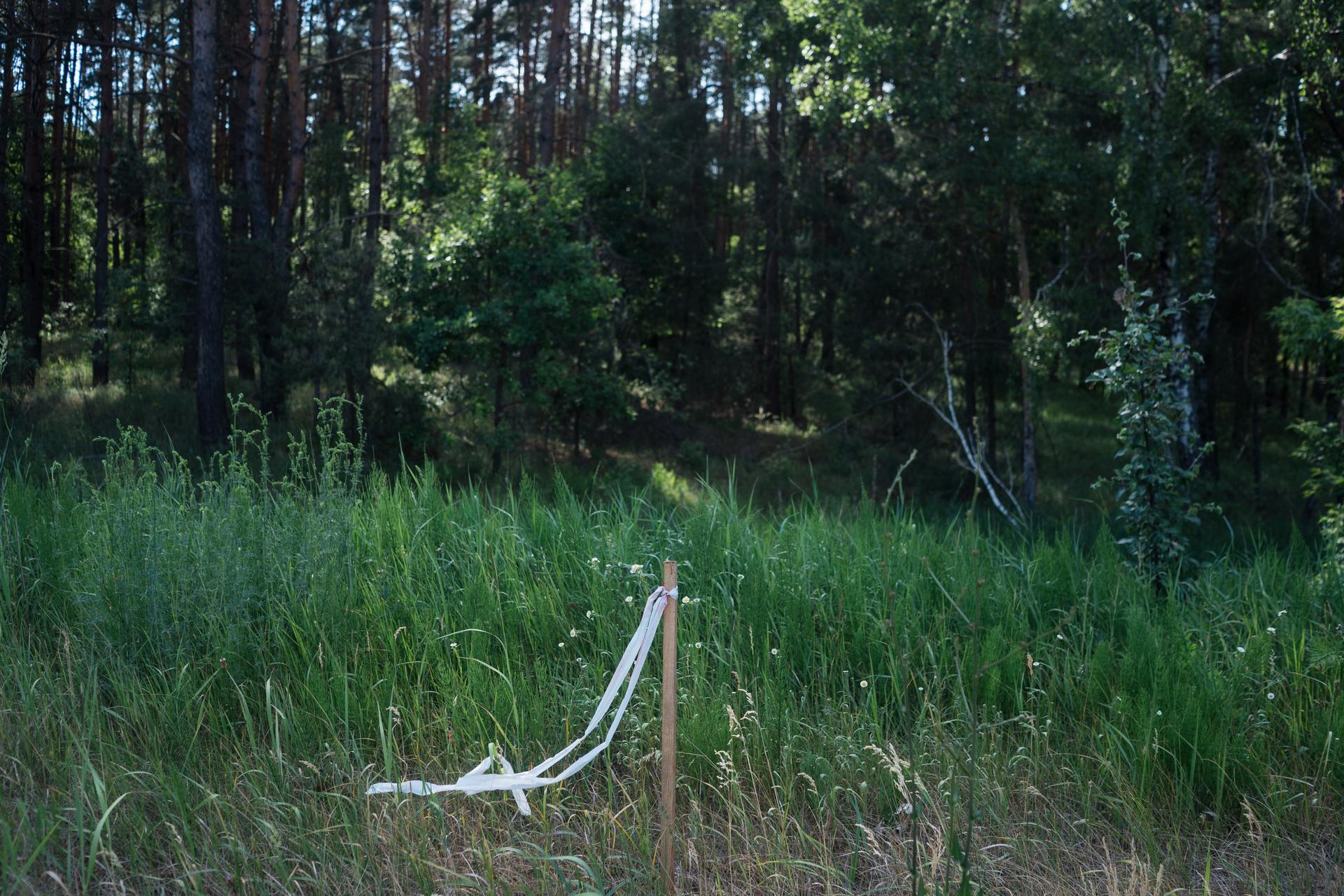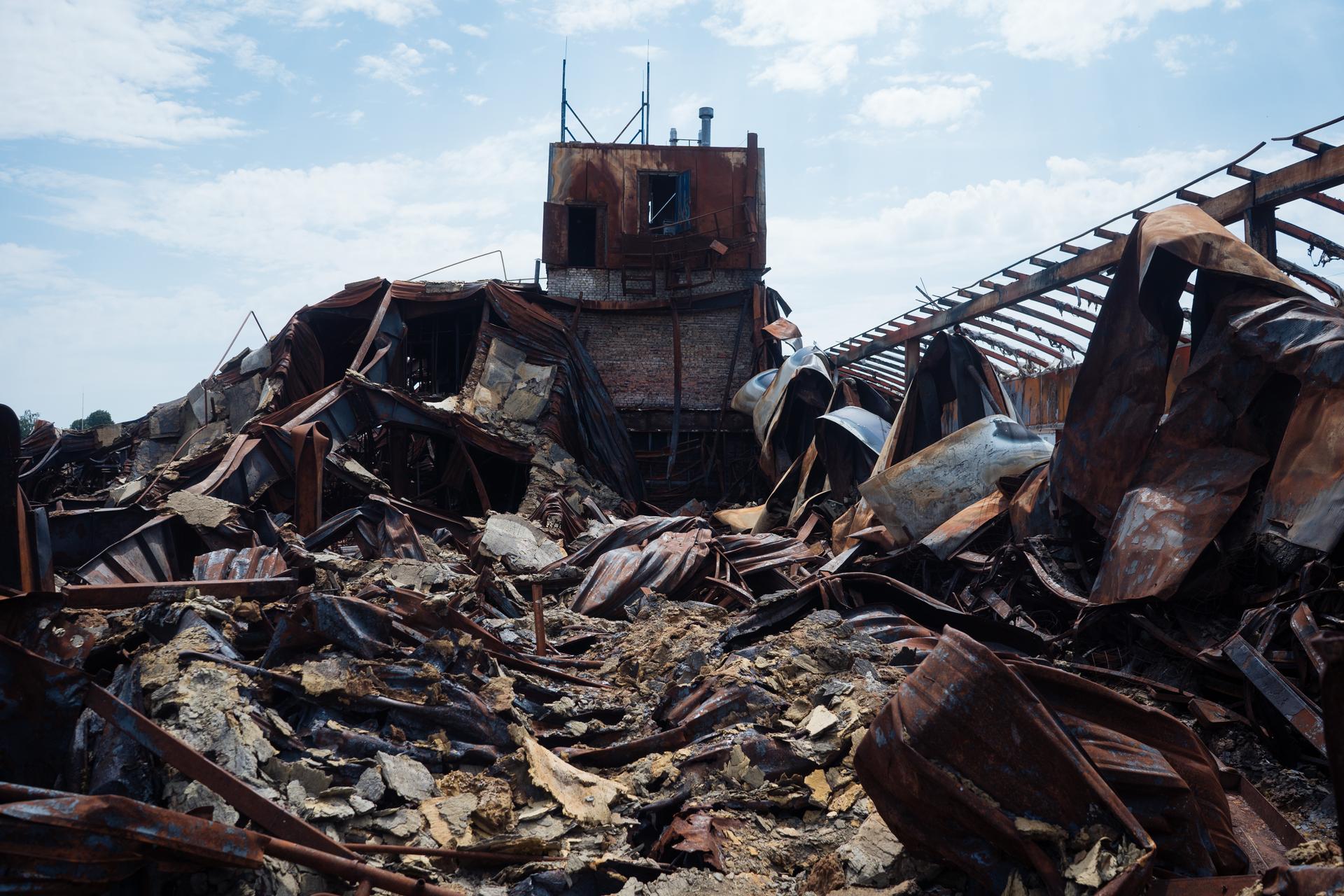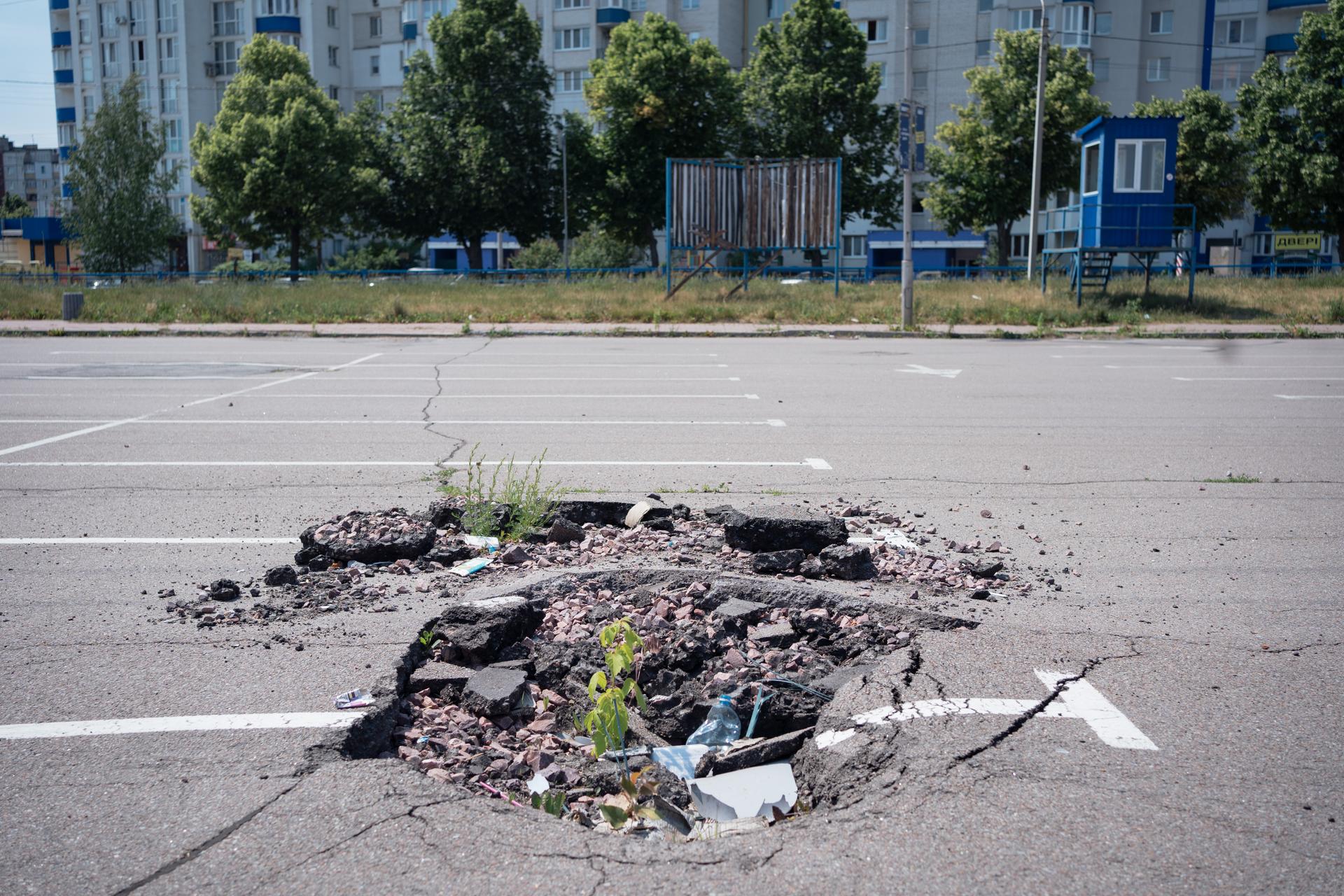Weeks after a Russian strike hit a Ukrainian oil depot in the town of Kalynivka last March, Pavlo Ivanov showed up with his team of government environmental inspectors to assess the damage.
He noted that the thick, concrete pad the oil tanks sat on was destroyed, with “huge craters from rocket impacts” and scrap metal all over the place; 6,000 tons of oil leaked from the depot in addition to whatever went up in flames as the site spewed thick, black smoke for five days.
Soil samples showed toxin levels 16 times higher than normal, Ivanov said, and a few months after the explosion, a 15-acre lake downhill from the depot was about half-covered in oil slicks.
Ivanov, walking along the lake on a recent visit, pointed to the far edge of the water to show where the oil started.
Related: The environmental cost of war in Ukraine
“I was pretty shocked because in all my career, this is the first time I’ve seen a disaster of this magnitude,” he said through an interpreter.
The site may have been unique, but the process wasn’t. Ukraine’s state environmental inspectorate sends inspectors out to document the damage after every Russian strike.
Their assessments are used to assign a dollar figure for the environmental damage done by Russian forces. At the Kalynivka oil depot, the damage from the burned and leaked oil was calculated to reach nearly $14 million.
Nationwide, the government puts the cost of the environmental destruction of the war at more than $56 billion.

“This is needed for future litigation in the international courts and future reparations that Russia will pay for all the damage they have caused,” said Dmytro Zaruba, deputy head of Ukraine’s environmental inspectorate.
This ongoing tally is based on a complex formula that goes beyond simply calculating an estimate for cleanup costs and lost profits, and uses methodology devised by a group of experts in the early months of the war.
“Imagine something happened to Niagara Falls,” Zaruba said. “How do you estimate what that’s worth?”
A handful of environmental nongovernmental organizations, both inside and outside of Ukraine, are compiling their own maps and databases of environmental damage to supplement government efforts.
“There is a great deal more environmental information being gathered on this conflict than previous conflicts,” said Doug Weir, from the UK charity Conflict and Environment Observatory, adding that it provides an unprecedented look at the environmental cost of this war.
At the NGO EcoAction, Alex Opanasenko manages an interactive map of Ukraine that marks different types of potential environmental harm with different colors — green for damage to industrial facilities and pink for impacts on ecosystems — and notes the date and location of each attack.
“We try to put attention to this problem because damaging the environment is not a first problem in our country,” he said. “But we can’t forget about it because it’s so important.”
Opanasenko, too, said a main goal of the work is one day holding Russia accountable for its actions.
EcoAction relies on volunteers to comb through news reports, social media posts and official government websites to find Russian attacks that may cause environmental damage. They do not make note of any damages caused by Ukrainian strikes.
Shizhana Tereshchenko, a college student, spends about half an hour a day in her Kyiv dorm room scrolling the internet, looking for these reports.
“When we do not see something, we do not know about the problem, so the importance of my job is to make everything visible,” she said through an EcoAction interpreter.
Tereschenko said most of what she sees is Russian rocket and artillery hits, often on industrial sites where there’s a risk of chemical contamination in nearby land or water.
Spending so much time reading about attacks in a region near where she grew up is hard, she said.
“The first week was the most difficult,” she said, “but after a while, I got used to it.”
Weir, from the Conflict and Environment Observatory, said there is precedent for making aggressors pay out for environmental impacts during wartime.
The example Ukrainian officials point to most frequently is the UN compensation program established in 1991 after Iraq’s invasion of Kuwait. Over more than 30 years, Iraq paid out a total of $52.4 billion, and a small portion of that went to environmental impacts.

“Money was awarded to states, for example, for the costs of monitoring the health of people from oil well fires, for the cost of cleanup and remediation, from oil spills on beaches and the land,” Weir explained. “And so, the process is there.”
The UN Compensation Commission was set up by the UN Security Council, however, where Russia is a permanent member.
“It’s not a model that could be followed now,” Weir said.
The International Court of Justice, in a 2018 case between Nicaragua and Costa Rica, has also established a precedent for awarding damages for environmental harm.
The UN has already established an official repository for documentation of environmental harm in Ukraine.
But Weir cautioned it might be too early for Ukraine to be coming up with its own damage estimates.
“It will be many years until we’re in a situation — if we are in a situation — where there will be discussions around how things are valued, what reparations actually look like,” he said. “And those conversations will rely on the data which is being collected now.”
In the meantime, cleanup work in Ukraine is largely seen as something that will have to wait until the war ends.
